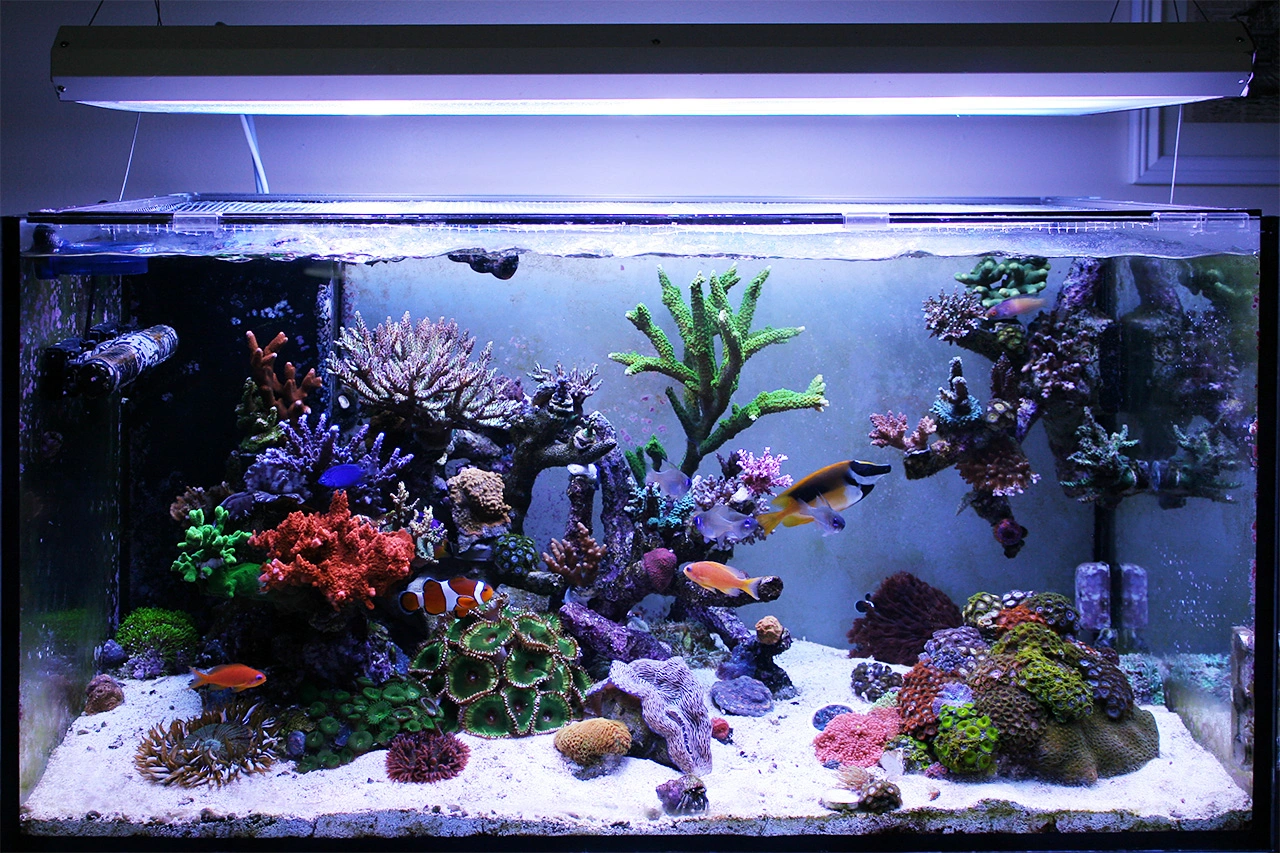Stunning 50-Gallon Reef Tank – metrokat's TOTM | NanoReef

Tank Specifications
Volume: 50 Gallons / 189 Liters
Dimensions (L × W × H):
36.0" ×
18.0" ×
18.0"
91.4cm ×
45.7cm ×
45.7cm
Equipment List
- Salt: BRS
Frequently Asked Questions
How often should I gravel vac my reef tank?
It is recommended to gravel vac your reef tank about once a week. This helps to remove detritus and organic waste that accumulates in the substrate.
What is the best way to gravel vac without losing water?
To avoid losing water while gravel vaccing, you can run the gravel vacuum into a filter sock that is hung in your sump. This will allow you to siphon out detritus while keeping the water within the tank.
How should I dose my reef tank?
In this setup, a 2-part dosing system is run on dosers controlled by the Apex controller. It’s also advisable to manually dose Magnesium as needed and to test parameters regularly, at least once a month.
What supplements should I consider for my reef tank?
You may want to consider dosing a variety of supplements such as Potassium, Boron, Strontium, Manganese, Vitamin C, phyto, amino acids, and bacteria. Sporadic dosing of these can help maintain coral health.
How often should I test my tank's parameters?
It is advisable to test tank parameters once a month. However, if you observe any visual signs that indicate something may be wrong, increase the frequency of testing.
What is the feeding routine for my corals and fish?
Corals should be fed daily while fish can be fed twice daily to ensure they receive adequate nutrition.
What filtration system should I use for my reef tank?
A reliable filtration system is essential. In this tank setup, an Innovative Marine Media Reactor is used which helps in maintaining water quality by employing various filter media.
How can I maintain good water quality in a reef tank?
Regular water changes, monitoring parameters such as salinity, pH, alkalinity, calcium, and magnesium, and keeping an effective filtration system are key to maintaining good water quality.
What type of lighting is recommended for a reef tank?
For a tank like this, a custom NanoBox ATI Retrofit with 4 ATI bulbs and 6 NanoBox V3 arrays with a 4-channel dimming feature provides excellent lighting for SPS corals.
How important is light for coral growth?
Light is crucial for coral health and growth, especially for SPS corals which require higher PAR levels. Regularly check PAR values and adjust lighting based on coral needs.
What type of fish can I keep in a reef tank?
In this setup, a variety of reef-safe fish such as Golden Rhomboid Wrasse, Spawning Clownfish Pair, and Longspine Cardinalfish have been successfully kept. Always research compatibility before introducing new fish.
What invertebrates are suitable for a reef tank?
Reef tanks can host various invertebrates such as clams, crabs, starfish, and snails. For example, Maxima Clams and Pistol Shrimps can coexist with corals if properly monitored.
How should I acclimate new fish or corals to my tank?
The best practice is to quarantine new additions first, ensuring they are healthy. Slowly acclimate them to the tank water by floating the bag for about 15-20 minutes followed by gradually mixing tank water into the bag before releasing them.
Why is a quarantine tank important?
A quarantine tank is vital for inspecting and treating new arrivals separately from the main tank. This reduces the risk of introducing pests or diseases, ensuring the health of your established reef.